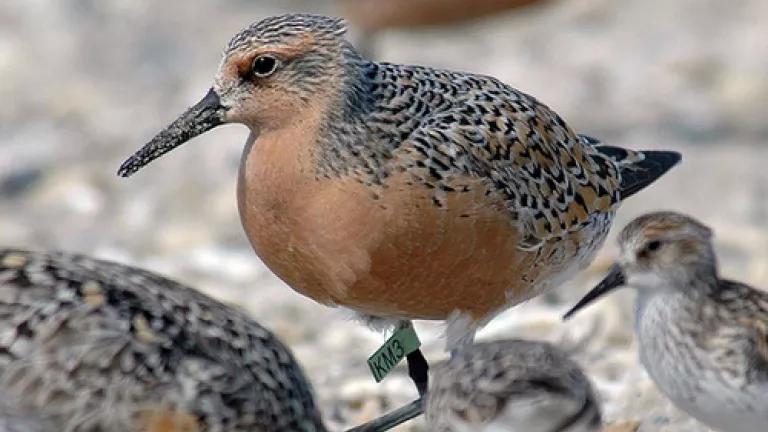
After migrating more than 9,300 miles every spring and fall, I’m sure the imperiled rufa Red Knot is a pretty patient species. But waiting for protections for the last 8 years while languishing on the Endangered Species Act “wait list” couldn’t have been easy!
Fortunately, help is finally on the way, as the U.S. Fish and Wildlife Service, today, listed the bird as “threatened” under the Endangered Species Act!
As I’ve written before, over the past 10 years, the Red Knot population has declined by 80% to less than 35,000 along the Atlantic Flyway due to food shortages at a key resting point during their spring migration: Delaware Bay. Traditionally, Red Knots have gorged themselves on horseshoe crab eggs left in the sand at this stop to gain weight for the final stage of their migration to the Arctic. But, in recent years, due to increasing commercial harvesting of horseshoe crabs for bait and other purposes in Delaware Bay, Red Knots haven’t been putting on the necessary ounces to finish their route. When Red Knots leave Delaware Bay in poor condition, they either die before ever reaching the Arctic or arrive in too poor a condition to successfully reproduce. As a result, adult birds are dying off without being replaced by juveniles, leading to population decline.
The most important action that can be taken to recover Red Knot populations is for states surrounding Delaware Bay to improve their management of horseshoe crab populations. But so far, they’ve been reluctant. While New Jersey implemented a moratorium on horseshoe crab harvesting in 2008, Delaware and Maryland, have failed to do so.
Hopefully, today’s listing will speed up better crab management in the region by leading to a critical habitat designation, which the Service expects to propose in 2015. These birds have waited long enough for help—let’s make sure their key habitat is protected as well!

